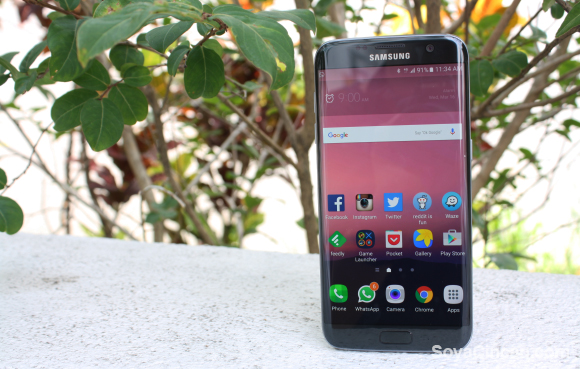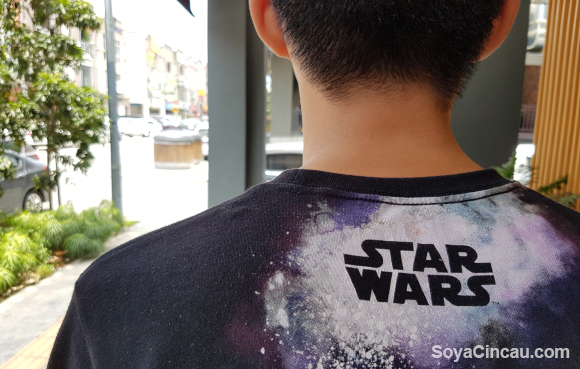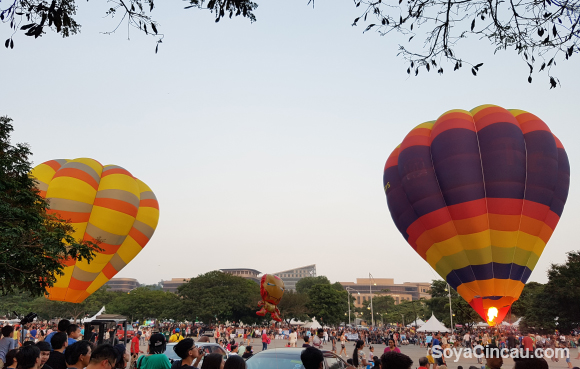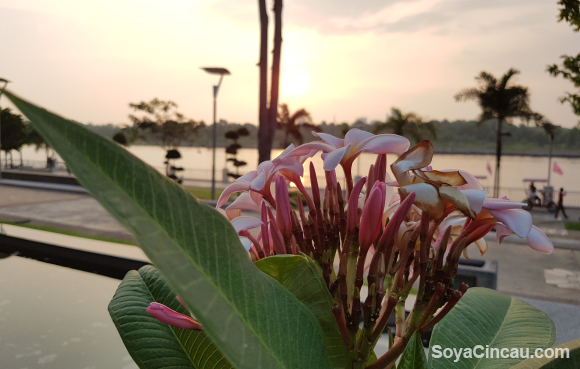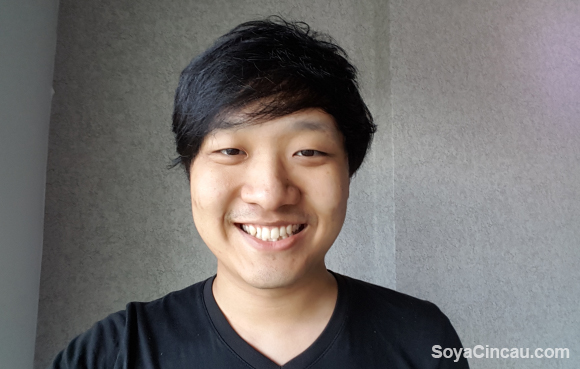How do you define perfection?
When Samsung unveiled the Galaxy S7 and S7 edge, we were stunned. At first, because it looked so much like their 2015 flagship devices, but later because of how amazing these devices were as smartphones.
If perfection is something simply doing what it’s supposed to do flawlessly, then the Galaxy S7 edge that I have on review is a real contender. It has monster specs, an incredible build, a fantastic camera and the latest version of Android.
Performance is absolutely buttery and for a glass-backed device, it’s really nice to hold in the hand, much nicer than something like the Galaxy S6 edge+. However, the most impressive thing is that camera which is probably one of, if not the best, smartphone camera right now.
As perfect as the Galaxy S7 edge is as a smartphone, it simply isn’t a device I’d buy for myself — and there’s a very good reason for that.
[nextpage title=”A Galaxy tethered to Earth”]
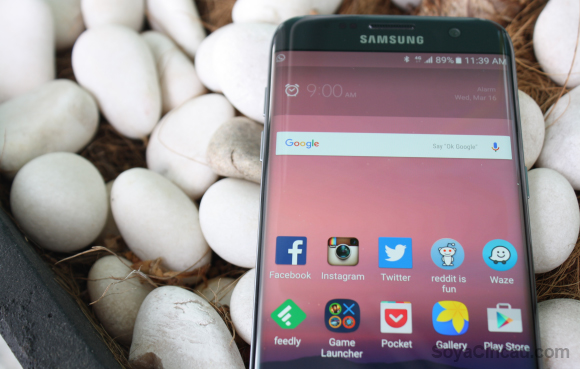
Perfection is a difficult thing to really place your finger on. Much like beauty, a lot of what makes something perfect lies in the eye of the beholder. Sure, you could make some sweeping declarations, but with people — the unique snowflakes that we are — these generalisations will not apply to everyone.
So, while the Samsung Galaxy S7 edge does check nearly every box in the “perfect smartphone” checklist, there will be people who disagree with what a perfect 2016 flagship should be. Still, that doesn’t detract from how truly awesome this piece of engineering is as a smartphone.
Truly amazing hardware
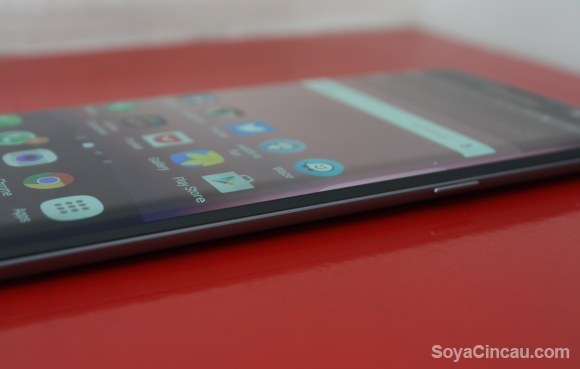
Samsung have really outdone themselves with the hardware for the Galaxy S7 edge. If you thought the Galaxy S6 edge/edge+ was good, then you’re in for a treat because the Galaxy S7 edge takes everything Samsung got right with the older devices and makes them even better.
Gone are the sharp edges from the flat-backed devices of old, instead, we get a nice subtle curve that not only makes it easier to pick up off the table but adds to the comfort in hand. That said, glass is far from my favourite build material for one simple reason — it’s a massive fingerprint and grime magnet. Everything sticks to it — smudges, fingerprints, grime, sweat, dust — you name it, it’ll stick.
I’d take a gorgeous hairline brushed aluminium finish any day of the week.
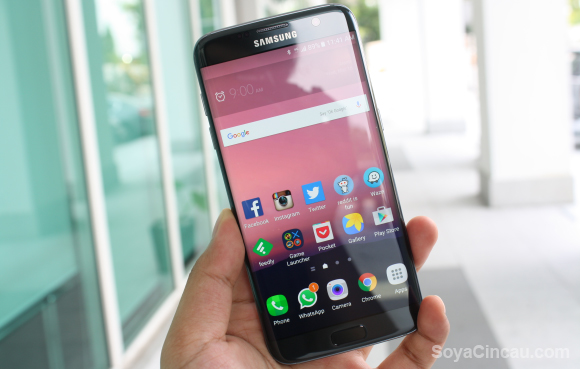
Spec-wise, this device is a beast and we’re going to start with the most amazing thing about the hardware — that dual-edge screen.
It looks stunning. If you’ve ever used a Galaxy S6 edge+, I’m sure you’ll understand what I’m talking about. But if you haven’t, it’s something you really have to experience because with every new application or web page, you’ll likely find something interesting that the dual-edge 5.5-inch Quad HD Super AMOLED panel does that no other display can.
Inside, the smartphone is powered by Samsung’s latest Exynos 8890 octa-core processor paired with 4GB of RAM and 32GB of internal storage. As expected from top-of-the-line specs running Android 6.0 Marshmallow, performance is buttery. Switching between apps is silky and multitasking works like a charm. Only once did it ever choke when switching from the gallery to the home page, but it could be an early firmware glitch.
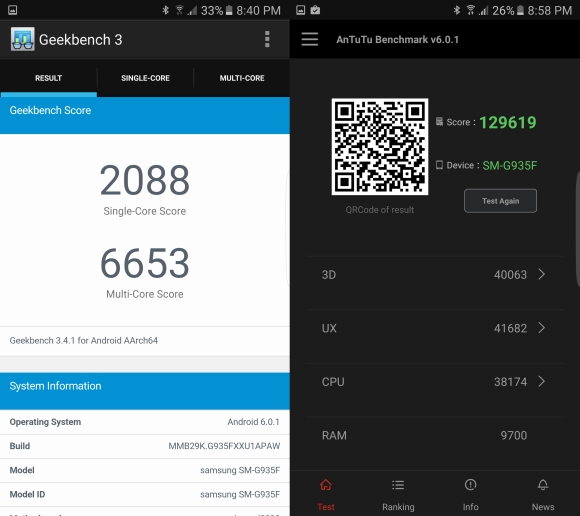
To keep you marvelling at the buttery transitions for longer, Sammy has bumped up the battery to a 3,600 mAh unit which is pretty decent. Though, with that high-resolution Quad HD display, battery life isn’t going to blow anyone away.
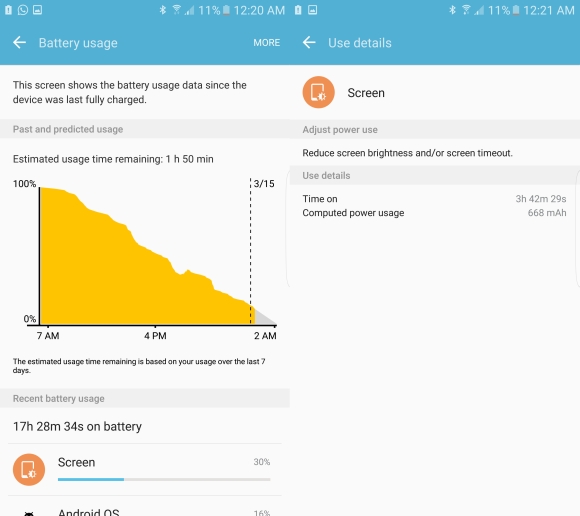
A bigger battery does mean it takes longer to charge though as the Galaxy S7 edge I’m reviewing took 2 full hours to hit 100% from 0% while 30 minutes on the plug gave me 37%.
Undoubtedly the feature that would have most fans gurning with pleasure would be the return of the microSD card slot. The Galaxy S7 edge supports cards up to 200GB though it does operate on a hybrid SIM format (you have to choose between 2 SIM or 1 SIM 1 microSD). It also doesn’t have support for Marshmallow’s adoptive storage function, which Samsung chose to leave out, but does let you transfer some apps to the SD.
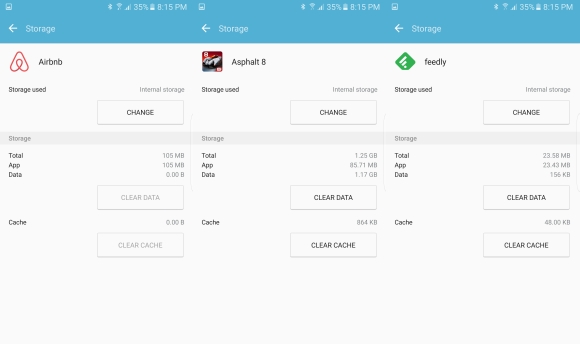
Though most core apps don’t allow this feature.

A gaming smartphone?
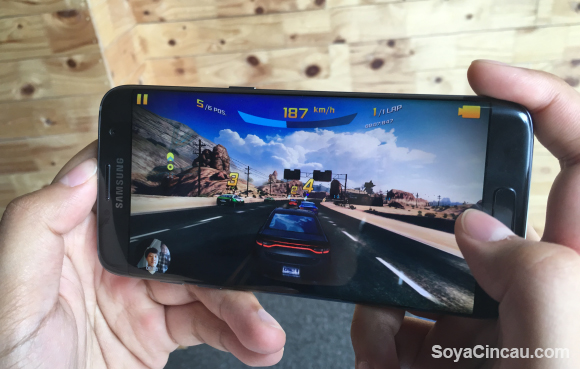
To make use of all that horsepower and the rise of mobile gaming, Samsung baked a feature into the Galaxy S7 edge called the ‘Game Launcher’, which supposedly optimises the device for mobile gaming. Does it actually make enough of a difference?
Well, first off, the Game Launcher picks up all your games (yep, even Crossy Road) and places them in a special folder on the home screen. From that folder you get to choose what type of gaming settings you want it to run at depending on how much power you want to save — Off (normal resolution, 60FPS), Save Power (low resolution, 30FPS), and Save Maximum power (extremely low resolution, 30FPS).
After some gaming on Modern Combat 5 and Asphalt 8, I found that the setting doesn’t really affect gameplay much. The good news is that switching to the lowest setting doesn’t turn your game into a potato, meaning it’s still very playable, but the downside is that the games still draw lots of power. Despite the heat pipe, the device does get hot during gaming but it is an improvement over last year’s flagships.
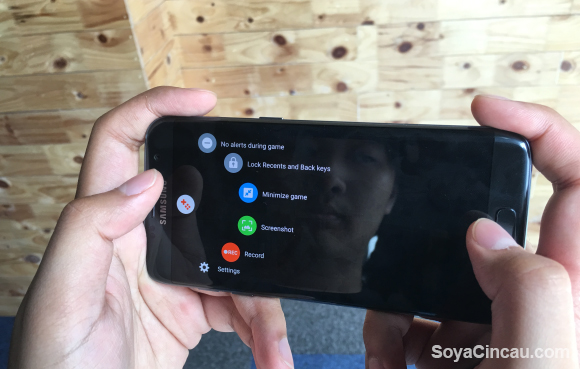
Game Launcher also gives you access to the new Game Tools, a set of nifty features that let you block notifications when you’re gaming, lock Recent and Back keys, minimise the game, take a screenshot and record gameplay.
While the recording function is useful as it allows you to record not only gameplay but also a face cam via the front-facing camera (at either 720p or 1080p), we found that the resulting footage was always a little choppy with frequent stuttering.
If you set the recording to pick up audio from the mic and you have your game sound on, odds are your voice will be drowned out by the game’s audio. Speaking of the audio, the placement of the downward facing speakers seems odd for a “gaming” device since they’re so easily blocked.
Still, you can have lots of fun pretending to be a streamer. I’d advise staying away from tilt control games though because the resulting footage can be rather disorienting.
An unbelievable camera that Samsung got so right
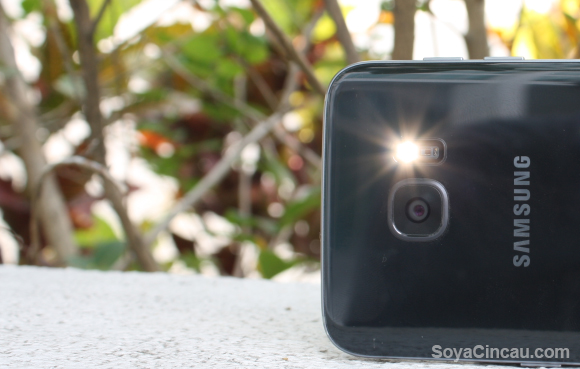
Well aware of potentially becoming a Gordon Ramsay meme, stunning would still be a word I’d use to describe the camera. Samsung have worked their magic with this Sony sensor and the result is one of the best smartphone camera experiences ever.
Despite bumping the primary camera resolution down to 12-megapixels, Samsung turned the rest up to eleven with their new Dual Pixel technology and we’ll start with how well this thing takes low-light photographs. By coupling a super fast f/1.7 lens with large 1.4-micron pixels, Samsung shored up one of their biggest weaknesses when it came to their smartphone cameras.
Samsung says that with this combo, their pictures are now 95% brighter than before and while I don’t know if those exact numbers are true, I’m very impressed with how well it takes low light shots. Take this shot for example:
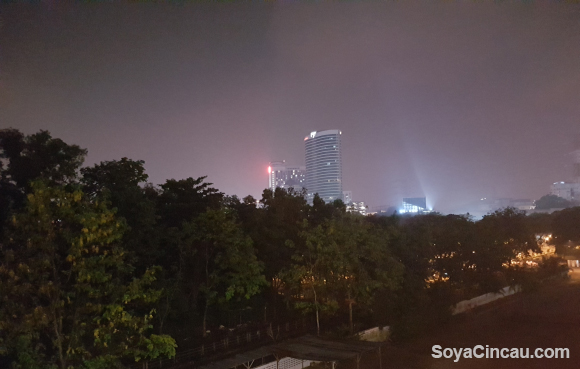
Now compare it to one from HTC’s best, the One A9.
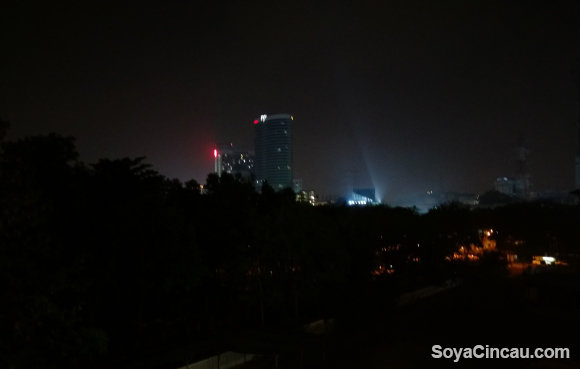
Granted, there’s quite a lot of noise, though considering the scene was all but pitch black, I’ll be a little lenient on my judgement. While low light performance is pretty amazing, I think the thing that really takes this device to the next level is how unbelievably fast it pulls focus. Samsung weren’t kidding when they said their Dual Pixel technology focuses quickly because it focuses almost as quickly as my own eyes.
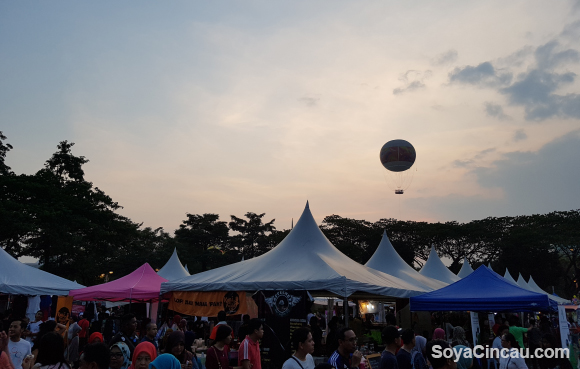
It’s truly a device you can whip out of your pocket while hitting the camera quick-launch (double tapping the home button), point it towards your subject and hit snap for the perfect shot. Unless you want to do something fancy with negative space, you likely won’t even need to touch to focus — it’s that fast and accurate
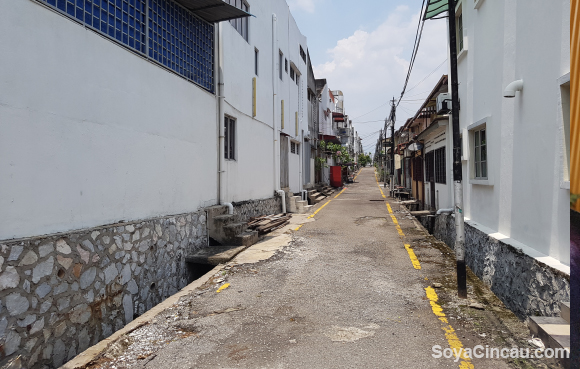
Speed is one thing, but what takes the cake is that it also takes beautiful images. Dynamic range with HDR left at auto was excellent, retaining a lot of detail in the sky despite it being a hot sunny day. Pictures are full of sharp detail and vibrant colours, though the post processing can get a little aggressive with the sharpening. I think I’ll let the pictures, which you can find in our gallery, speak for themselves. The front camera is pretty much the same as on the Galaxy S6, but I have included a selfie for those interested.
It’s probably the easiest smartphone camera to recommend to someone who is just starting out with photography and wants to learn the basics. If and when they want to dabble with manual controls, the Galaxy S7 edge has that full suite too, with manual focus, ISO, shutter speed and white balance controls in the “Pro” mode.
Some features that probably won’t make the phone better for most, but are simply there
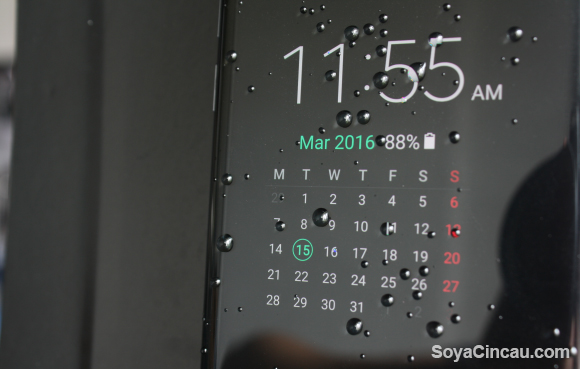
Two words: Edge functionality. It’s there and it’s slightly better than it was on the older devices thanks to Samsung’s Marshmallow update but ultimately this was the feature I used the least. It was cool for a bit — especially to show off — but beyond that, the multitasking button and the home button brought me to my apps much quicker.
The current iteration of the always-on display has also annoyed me more than it should. This is where Microsoft’s glance screen just works so much better because it doesn’t jump around and distract me from my work like the Galaxy S7 edge’s does. The good news is that you can turn it off if it annoys you.
Waterproofing was another feature I didn’t find particularly useful, but, it did give me some peace of mind in our unpredictable weather. Keep in mind if you shower with your phone, to not let the water hit the screen directly because it drives the screen nuts. We will have a more thorough waterproofing test in the near future so stay tuned for that.
Then there are things that Samsung gets so wrong
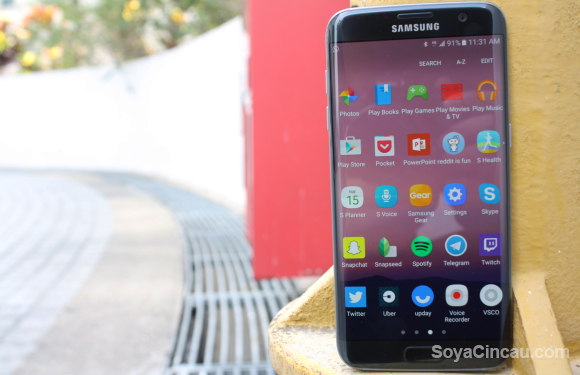
Yep, I’ve held off for so long, but we have arrived at the one inescapable problem not even the Galaxy S7 edge could sort out — TouchWiz. My gosh it’s ugly.
I know looks are down to the individual so I won’t dwell on that, but a user-friendly UI should be universal right? I’ll grant that TouchWiz is better than it has ever been and even if I could forgive the amount of bloatware baked into the device, I simply can’t forgive that app drawer.
On most Android skins with an app drawer, you have the option to fix the arrangement of the applications in an alphabetical order, rather than frequency or whatever other orders manufacturers deem appropriate. On the Galaxy S7 edge, you can sort the apps into an alphabetical order once, but the moment you install a new app, it goes all the way to the end of the list. Why can’t I just lock it in a permanent alphabetical order?
And then there’s the fingerprint sensor. Samsung’s fingerprint sensors have never been something to shout about, and while this one is an improvement, it is still so far behind those from Huawei and Apple that I find it easier to just use a pattern to unlock. It’s so incredible how inconsistent the detection is despite taking around 14 touches to enrol (the Nexus 6P takes 6 touches and is way more accurate), that you have to wonder: Is 14 too many?
If the Galaxy S7 edge was an Avenger…
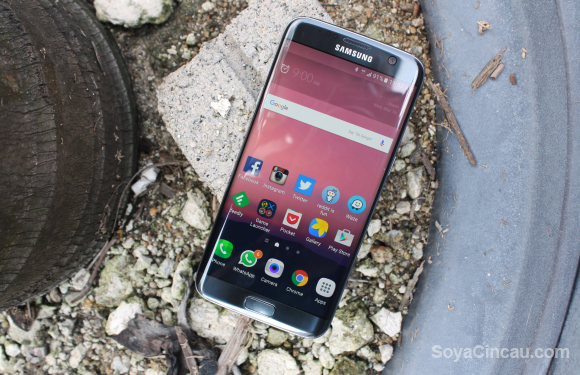
The Galaxy S7 edge is a fantastic device, there’s no doubt about it. In fact, if someone asked me what the best smartphone money could buy right now was, I’d put this RM3,099 device right up there with the Nexus 6P (RM2,698) — and that’s as high as it gets in my book. Many of the faults I find with the Galaxy S7 edge are either personal or nitpicky — things I might not have minded or noticed if it didn’t get so much of everything else right. But the thing is, the Galaxy S7 edge is perfect as a smartphone, and unfortunately, that’s about it.
Besides that camera module, the Galaxy S7 edge just isn’t spectacular enough to be a 2016 flagship. If this smartphone was an Avenger, it’d be Captain America — the perfect human specimen — but that’s all he is: Human. He’s bound by what he is the same way the Galaxy S7 edge is bound by the fact that it is a smartphone and nothing more.
The smartphone as we know it today has been around since the iPhone was released back in 2007. That’s nearly a decade of devices carved from the same template and I think that 2016 should be the year of something more. LG is trying something new. Samsung should have listened to their own slogan to “rethink what a smartphone can do” because while they have created a near flawless smartphone, I think the current iteration of the ‘smartphone’ is already becoming an outdated notion.
[nextpage title=”Gallery”]
Here are some photos I took with the Samsung Galaxy S7 edge. Click on each image to view to full size. If you’d like to see more photos of the device itself, be sure to check out our album on Facebook.
Bonus selfie:

